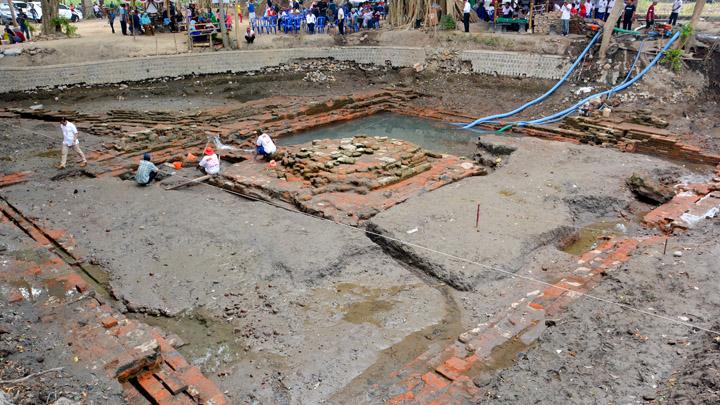
TEMPO.CO, Jakarta - The building with the red-and-green facade looks striking in the middle of an elite residential area at Jakabaring, Palembang, South Sumatra. At first glimpse, people could mistake it for a Confucian temple, where Chinese Indonesians go for prayers. Most eye-catching is the Chinese calligraphy written on the outside of the building.
It is, in fact, the Cheng Ho Sriwijaya Mosque. The dome on the roof and the two minarets on either side of the building-the usual characteristics of a mosque-are also present.
Saleh, an entrepreneur, is a regular at the mosque. He said the mosque's unique architecture made it a good place to pray in. "And it's a large, spacious building, making it comfortable to use even when lots of people convene during prayer time, or during Qur'anic recitation sessions," he added.
Its strategic location far from the main road and the thrum of heavy traffic adds to its charm. But Saleh is worried that as the mosque gains popularity in Palembang, more people will come making it overcrowded during times like Ramadan. "I think the management should anticipate the possible increase of worshippers," he said.
In Indonesia, the Cheng Ho Mosque in Jakabaring is not the only one with predominantly Chinese architecture. In Surabaya and Pandaan, East Java, two other mosques have also combined Chinese architecture with Islamic devotion. Both are also named the Cheng Ho Mosque.
The name was inspired by a Chinese Muslim admiral from the Hui tribe who sailed around the world in the 15th century, during the time of the Ming Dynasty. He visited Indonesia seven times in his travels and came through the port of Palembang three times.
Cheng Ho is considered to have been instrumental to spreading Islamic teachings in South Sumatra along with other Chinese Muslim traders. Admiral Cheng Ho has now become a household name, and is seen as a symbol of assimilation between the Chinese and Islamic cultures.
The mosque on the axis road connecting Samarinda and Balikpapan in East Kalimantan is one such symbol. The Muhammad Cheng Ho Mosque there was built a decade ago. The building's hues are a dominant gold and bright red. Unlike the ones in South Sumatra and East Java, this mosque has no Chinese ornamentation, and the architecture more resembles a temple than a conventional mosque.
It was its striking colors and the Chinese calligraphy on the gate that first caught Sulistiawan's attention, and got him to enter the mosque. Sulistiawan, 28, often travels between Samarinda and Balikpapan for work. He now makes a point of stopping at the mosque at prayer times. "The mosque is unique. It is clean and very well-maintained. There are other mosques nearby, but I think this one has the most interesting architecture," he said. (*)
Read more inspiring Outreach stories in Tempo English Weekly News Magazine























